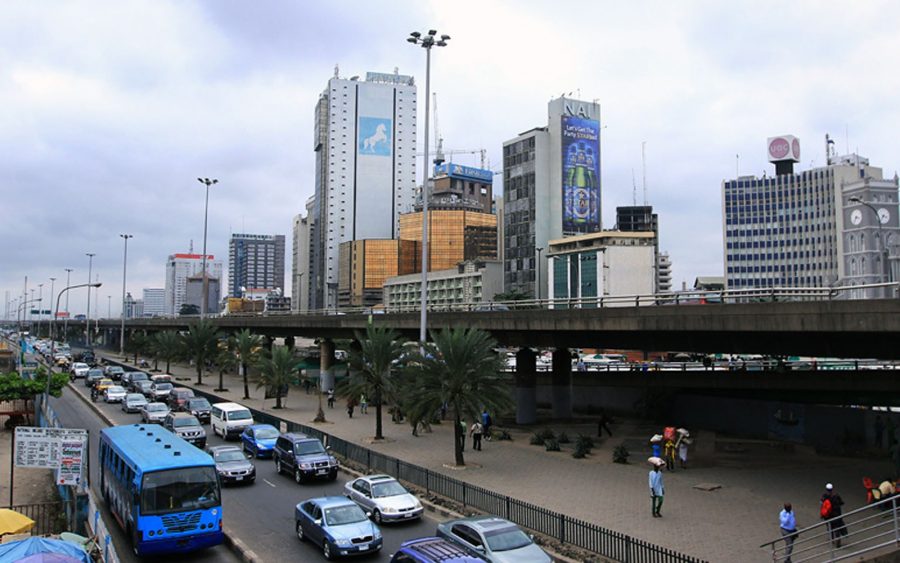Nigeria’s Gross Domestic Product (GDP) grew by 0.11% (year-on-year) in real terms in the fourth quarter of 2020, representing the first positive quarterly growth in the last three quarters.
This is contained in the Nigerian Gross Domestic Product report, published by the National Bureau of Statistics (NBS).
According to the report, the growth was largely driven by positive growth recorded in the information and communication sector (15.9%) and agriculture (3.42%).
READ: Aviation: Nigerian ground handling firms count revenue losses due to pandemic-induced plunge
Highlights
- The oil sector plunged by 19.76% (year-on-year) in real terms as against a contraction of 13.89% recorded in Q3 2020.
- The non-oil sector on the other hand grew by 1.69% in real terms, an improvement compared to the contraction of 2.51% recorded in Q3 2020. It however was slower than 2.26% recorded in the corresponding period of 2019.
- The service sector contributed 54.28% to the GDP in Q4 2020, followed by agriculture, which contributed 26.95%, and industries with 18.77%.
- Non-oil accounted for 94.13% while the oil sector accounted for 5.87% of the total GDP for Q4 2020.
READ: Finance and Insurance Sector contributes 3.36% to GDP in 2020

Oil sector
The oil sector contracted by 19.76% (year-on-year) in Q4 2020, a downturn compared to a similar contraction of 13.89% recorded in the previous quarter (Q3 2020).
- It also represents a decline of 26.12% points when compared to a positive growth of 6.36% recorded in the corresponding period of 2019.
- The sector’s contribution to Nigeria’s GDP also reduced to 5.87% in Q4 2020 from 8.73% recorded in Q3 2020 and 7.32% in Q4 2019.
- In Q4 2020, average daily oil production of 1.56 million barrels per day (mbpd) was recorded, representing a 6.59% and 22% declines when compared to 1.67mbpd and 2mbpd recorded in Q3 2020 and Q4 2019 respectively.
- The decline in the oil sector activity can be attributed to the crash in global crude oil prices, which was triggered by the oil price war between Saudi Arabia and Russia.
READ: Covid-19: Nigerian record worst consumption expenditure in over 12 quarters
Non-oil Sector
The non-oil sector grew by 1.69% in real terms in Q4 2020, slower than the 2.26% recorded in the corresponding quarter of 2019, but better than the 2.51% negative growth rate recorded in the preceding quarter.
- Growth in the sector was largely driven by Information and Communication (Telecommunications & Broadcasting).
- Other drivers were Agriculture (Crop Production), Real Estate, Manufacturing (Food, Beverage & Tobacco), Mining and Quarrying (Quarrying and other Minerals), and Construction.
- In real terms, the Non-Oil sector contributed 94.13% to the nation’s GDP in the fourth quarter of 2020, higher than the share recorded in the fourth quarter of 2019 (92.68%) and the third quarter of 2020 (91.27%).
READ: $1.2 billion routed through StanChart and 3 other banks – NBS Report
Key sectors’ performance
- The agricultural sector, in the fourth quarter of 2020, grew by 3.42% (year-on-year) in real terms, an increase by 1.11% points from the corresponding period of 2019, and an increase of 2.03% points from the preceding quarter which recorded a growth rate of 1.39%.
- The sector also contributed 26.95% to the overall GDP in real terms in Q4 2020, higher than the contribution in Q4 2019 but lower than Q3 2020 which stood at 26.09% and 30.77% respectively.
- Real GDP growth in the manufacturing sector in the quarter under review stood at –1.51% (year on year), lower than the corresponding period of 2019 and the preceding quarter by 2.75% points and 0.01% points respectively.
- The real contribution to GDP in Q4 2020 was 8.60%, lower than the 8.74% recorded in the fourth quarter of 2019 and 8.93% recorded in Q3 2020.
- In real terms, the Trade sector contracted by 3.2% (year-on-year) in the fourth quarter of 2020, which was 2.62% points lower than the rate recorded in Q4 2019, and 8.92% points higher than in the preceding quarter.
- Trade’s contribution to GDP was 15.46%, which is lower than the 15.99% it represented in the corresponding period of 2019, but higher than the 13.88% recorded in the previous quarter.
- Information and communication recorded a growth rate of 14.95% in real terms, an increase of 6.45% points over the corresponding period of 2019.
- The sector contributed 15.06% to aggregate real GDP in Q4 2020, higher than the same quarter of the previous year in which it represented 13.12% and higher than the preceding quarter, in which it represented 13.47%.
What this means
The positive growth in real GDP indicates that the Nigerian economy has recovered from the pandemic-induced recession which disrupted economic activities in most part of 2020. The country will look to post capitalise on this to boost the economy further in subsequent quarters.















.gif)







If Nigeria has exited recession,why the inflationary rate is still in the upward trajectory and unemployment still rising on daily basis.As a student of Economics,two parameters(macroeconomic indices) above contribute significantly in terms of the direction the direction the economy moves.How does Nigerian Bureau of Statistics (NBS) arrive at this figure when the reality is pointing otherwise?Let them come out and explain to us and not just chunking out figures to us.